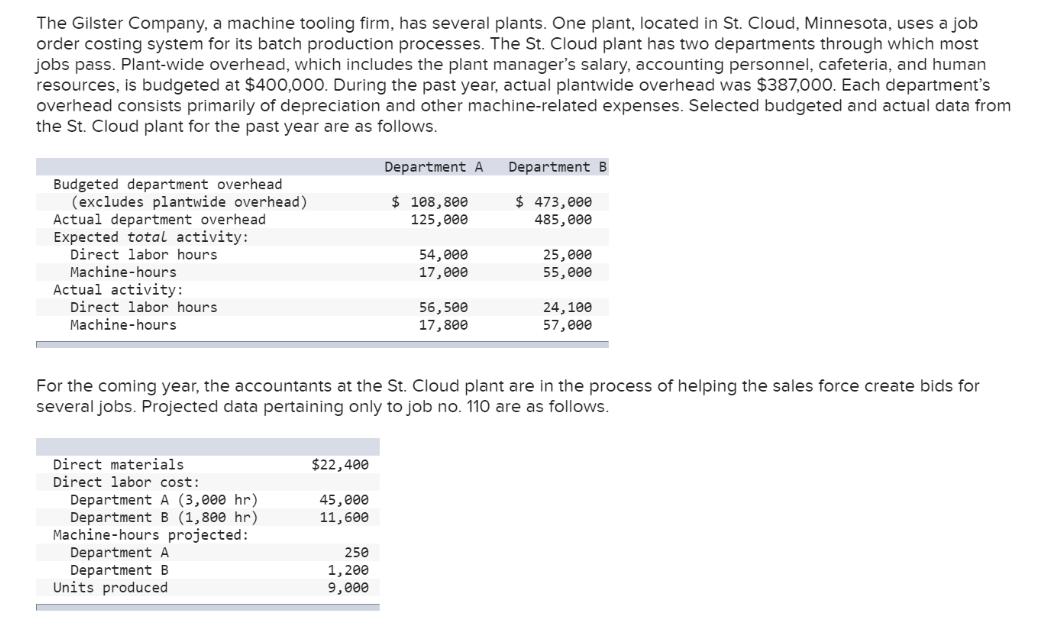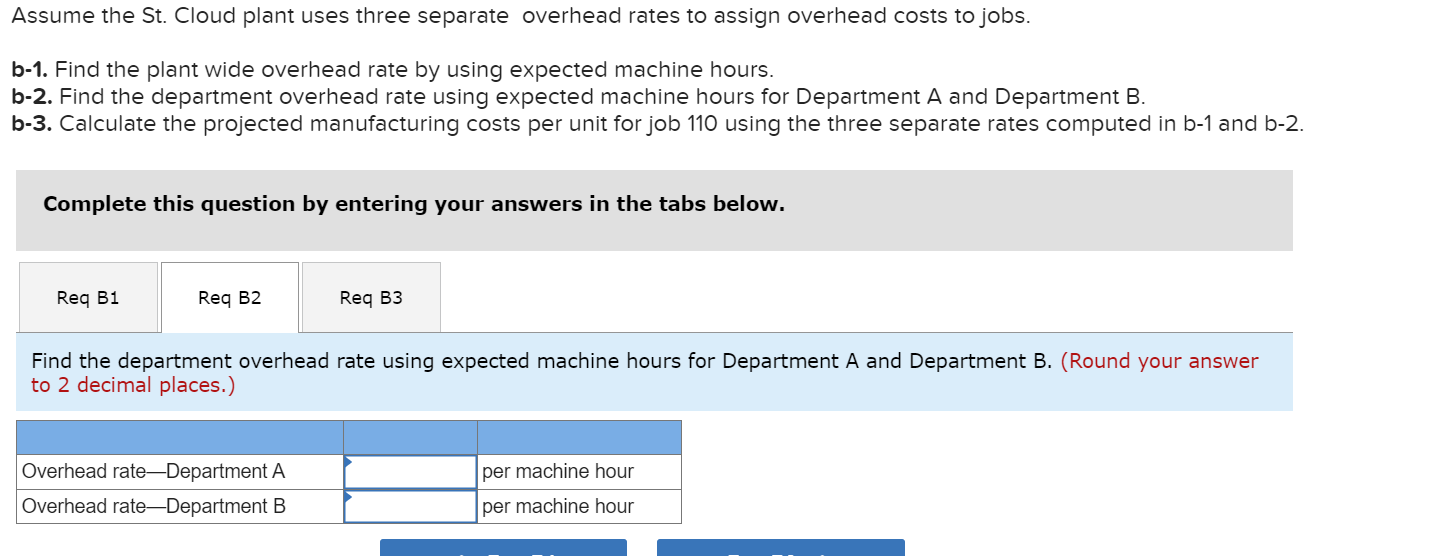Answered step by step
Verified Expert Solution
Question
1 Approved Answer
The Gilster Company, a machine tooling firm, has several plants. One plant, located in St. Cloud, Minnesota, uses a job order costing system for




The Gilster Company, a machine tooling firm, has several plants. One plant, located in St. Cloud, Minnesota, uses a job order costing system for its batch production processes. The St. Cloud plant has two departments through which most jobs pass. Plant-wide overhead, which includes the plant manager's salary, accounting personnel, cafeteria, and human resources, is budgeted at $400,000. During the past year, actual plantwide overhead was $387,000. Each department's overhead consists primarily of depreciation and other machine-related expenses. Selected budgeted and actual data from the St. Cloud plant for the past year are as follows. Budgeted department overhead (excludes plantwide overhead) Actual department overhead Expected total activity: Direct labor hours Machine-hours Actual activity: Direct labor hours Machine-hours Department A Department B $ 108,800 $ 473,000 125,000 485,000 54,000 25,000 17,000 55,000 56,500 24,100 17,800 57,000 For the coming year, the accountants at the St. Cloud plant are in the process of helping the sales force create bids for several jobs. Projected data pertaining only to job no. 110 are as follows. Direct materials $22,400 Direct labor cost: Department A (3,000 hr) 45,000 Department B (1,800 hr) 11,600 Machine-hours projected: Department A 250 Department B 1,200 Units produced 9,000 Assume the St. Cloud plant uses three separate overhead rates to assign overhead costs to jobs. b-1. Find the plant wide overhead rate by using expected machine hours. b-2. Find the department overhead rate using expected machine hours for Department A and Department B. b-3. Calculate the projected manufacturing costs per unit for job 110 using the three separate rates computed in b-1 and b-2. Complete this question by entering your answers in the tabs below. Req B1 Req B2 Req B3 Find the plant wide overhead rate by using expected machine hours. (Round your answer to 2 decimal places.) Plantwide overhead rate per machine hour Assume the St. Cloud plant uses three separate overhead rates to assign overhead costs to jobs. b-1. Find the plant wide overhead rate by using expected machine hours. b-2. Find the department overhead rate using expected machine hours for Department A and Department B. b-3. Calculate the projected manufacturing costs per unit for job 110 using the three separate rates computed in b-1 and b-2. Complete this question by entering your answers in the tabs below. Req B1 Req B2 Req B3 Find the department overhead rate using expected machine hours for Department A and Department B. (Round your answer to 2 decimal places.) Overhead rate-Department A per machine hour Overhead rate-Department B per machine hour Assume the St. Cloud plant uses three separate overhead rates to assign overhead costs to jobs. b-1. Find the plant wide overhead rate by using expected machine hours. b-2. Find the department overhead rate using expected machine hours for Department A and Department B. b-3. Calculate the projected manufacturing costs per unit for job 110 using the three separate rates computed in b-1 and b-2. Complete this question by entering your answers in the tabs below. Req B1 Req B2 Req B3 Calculate the projected manufacturing costs per unit for job 110 using the three separate rates computed in b-1 and b-2. (Round your intermediate calculations and final answer to 2 decimal places.) Manufacturing costs for job 110 per unit
Step by Step Solution
There are 3 Steps involved in it
Step: 1

Get Instant Access to Expert-Tailored Solutions
See step-by-step solutions with expert insights and AI powered tools for academic success
Step: 2

Step: 3

Ace Your Homework with AI
Get the answers you need in no time with our AI-driven, step-by-step assistance
Get Started


